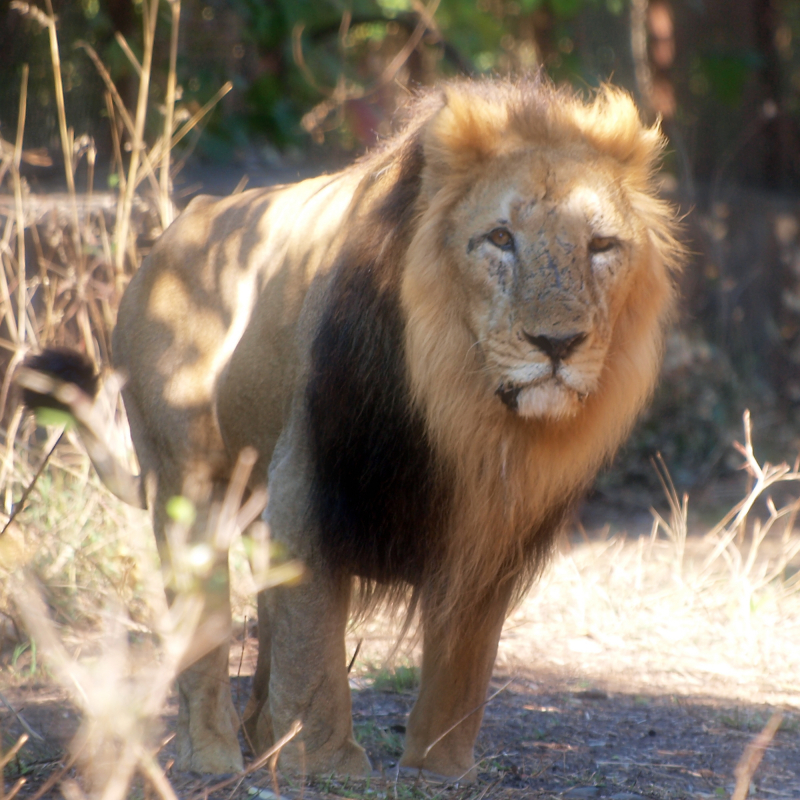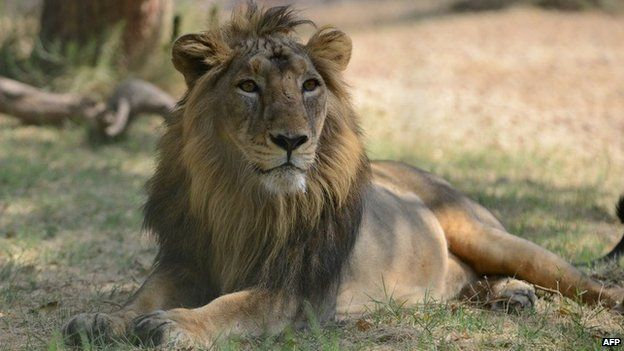Asiatic Lion

Only India's population of Panthera leo leo, known as the Asiatic lion, still exists in the wild today. Its range has been confined to Gir National Park and the neighboring areas in the Indian state of Gujarat since the turn of the 20th century. It once populated a large portion of the Middle East and northern India.
The color of the Asiatic lion's fur varies from ruddy-tawny with prominent black spots to sandy or buffish grey, occasionally with a silvery shine in certain lighting. Males' ears are constantly visible because of the mild mane development on top of their heads. On the cheeks and throat, where it is barely 10 cm long, the mane is sparse. In comparison to African lions, who only have one foramen on either side, almost half of the Asiatic lion skulls from the Gir forest had divided infraorbital foramina.
The Asiatic lion, also known as Panthera leo persica, is a similarly ferocious animal. The Asiatic lion, which may be found in India and Pakistan, is smaller than the more well-known African lion. It can grow to a length of 2.9 m, weigh between 110 and 190 kg, and stand up to 1.1 m tall. The shorter mane of the Asiatic lion is another way to identify it.
The Asiatic lion can be deadly to people despite its modest size because it can move quickly. They occasionally hunt small mammals since they are opportunistic hunters, but they prefer larger prey.











